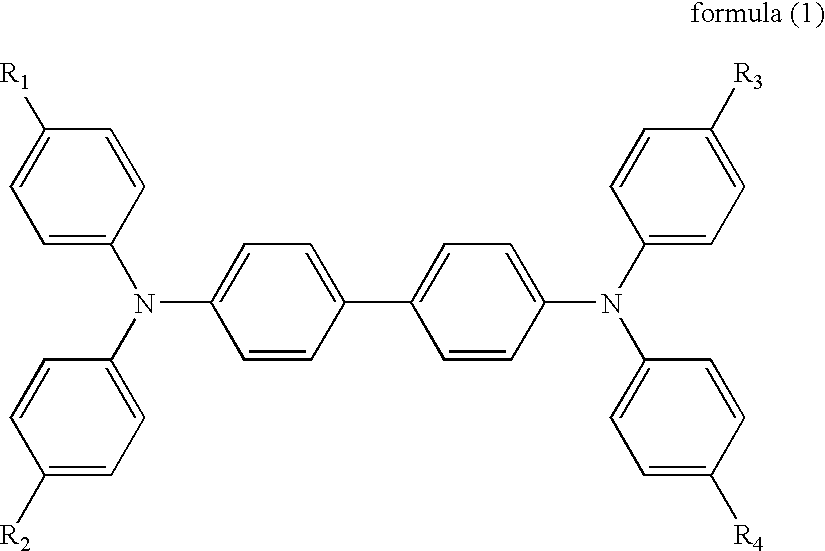Electrophotographic photoreceptor
a photoreceptor and electron beam technology, applied in the field of electron beam photoreceptors, can solve the problems of difficult crystal deposition during the preparation of the photosensitive layer, difficult to render the image, etc., and achieve the effect of reducing image defects
- Summary
- Abstract
- Description
- Claims
- Application Information
AI Technical Summary
Benefits of technology
Problems solved by technology
Method used
Image
Examples
examples
[0074]The present invention will be described with reference to examples but is by no means limited to these. In Examples, “part(s)” represents parts by mass, unless otherwise noted.
Preparation of N-Type Semiconductor Particles
[0075]In 10 parts of a mixture of ethanol / n-propyl alcohol / THF (45:20:35 by volume) was dissolved 0.1 parts of copolymer of methylhydrogen-siloxane and dimethylsiloxane (1:1). Further thereto was added 3.5 parts of rutile type titanium dioxide (having a number average primary particle size of 35 nm and having been subjected to a 5% alumina primary surface treatment by alumina), stirred for 1 hr. to perform a surface treatment (secondary treatment) and separated from the solvents. There was titanium oxide particle 1 as surface treated N-type semiconductor particles.
[0076]Titanium oxides 2 and 3 were each prepared similarly to the foregoing titanium oxide 1, except that the number average primary particle size was changed to 3 and 100 nm, respectively.
Preparatio...
PUM
| Property | Measurement | Unit |
|---|---|---|
| number average primary particle size | aaaaa | aaaaa |
| particle size | aaaaa | aaaaa |
| particle size | aaaaa | aaaaa |
Abstract
Description
Claims
Application Information
 Login to View More
Login to View More - R&D
- Intellectual Property
- Life Sciences
- Materials
- Tech Scout
- Unparalleled Data Quality
- Higher Quality Content
- 60% Fewer Hallucinations
Browse by: Latest US Patents, China's latest patents, Technical Efficacy Thesaurus, Application Domain, Technology Topic, Popular Technical Reports.
© 2025 PatSnap. All rights reserved.Legal|Privacy policy|Modern Slavery Act Transparency Statement|Sitemap|About US| Contact US: help@patsnap.com



